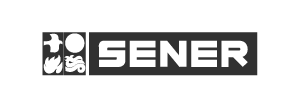Introduction
Grekkom® HTC it is a software developed specifically to detect skin temperature anomalies in groups of people based on thermography. This document describes some of the factors that characterize this solution.
Can HTC be used to detect COVID-19 or an infection? The answer is no, but HTC along with a thermo-graphic/ radiometric camera can be used to detect elevated body temperature in humans.
Grekkom´s HTC along with a thermo-graphic/radiometric camera have a long history of being used in public spaces—such as airports, cruises, hospitals, schools, government buildings, office buildings, factories and all kind of businesses—as an effective tool to measure skin surface temperature.
In light of the global outbreak of the coronavirus (COVID-19), Grekkom is deeply concerned about the spread of infection and seeking tools to help slow and ultimately stop the spread of the virus. Although Grekkom´s HTC cannot detect or diagnose COVID-19, Grekkom´s HTC can be used as an adjunct to other body temperature screening tools for detecting elevated skin temperature in high-traffic public places through quick individual screening.
Using Grekkom´s HTC together with thermo-graphic/radiometric cameras, can be more discrete, efficient, and effective in identifying individuals that need further testing.
Disclaimer: Our products are not used to diagnose the COVID-19. Grekkom is not advertising or promoting HTC – Human Temperature Control – for use in the medical industry or for medical purposes. HTC can identify individuals in a population that show elevated body temperature in relation to average population. HTC do not find individuals experiencing coronavirus or other virus symptoms. There is no way to thermally detect, identify or diagnose an infected individual. Only a licensed medical professional can determine if a hot individual is experiencing COVID-19 or any other virus or illness.
Accuracy
In order to achieve high accuracy, Grekkom HTC scans key areas of the face (eyes, ears, forehead, cheeks…). However, the only areas for reliable measurement are:
- Inner canthus of the eye: close to the brain and hypothalamus where a branch of the carotid artery terminates. Ideal area to measure EBT, but the target size is only 5-6 mm (the most stable and convenient area for measurement).
- Ear canal (tympanic membrane): One of the best places: several arteries flow to the hypothalamus which regulates body temperature … but we can only see the outside of the ear canal.
Experts have confirmed that there is a correlation between the eye canthus temperature and body temperature. It is important to know, that the most sensitive radiometric/thermo-graphic cameras on the market require a mínimum of 4 pixels to accurately read the temperature of an object and most common cameras will require a minimum of 8 pixels. Once said this, it is important to highlight that the tear duct is a small area and in order to accurately scan the area, we need to put enough pixels on it to make a good measurement. A minimum 320 x 240 resolution camera is required to be able to scan this area. Grekkom cannot guarantee a ±0,3 °C/ ±0,5 °F accuracy when using a camera with less resolution than 320 x 240.
How can HTC along with a thermo-graphic/radiometric camera be used for elevated body temperature detection if the camera´s accuracy is only ±2 or ±5 °C / ±3,6ºF or ±9°F?
Most thermography/radiometric cameras have the same accuracy. This value refers to the absolute accuracy of the camera when measuring temperature in a non-controlled environment (temperature may vary without control, rapidly and drastically) and at a large distance (over 20 mts). When using these cameras for elevated body temperature detection, the absolute temperature is not important and we care more about the relative temperatura instead.
How can HTC guarantee a ±0,3 °C/ ±0,5 °F accuracy
HTC was developed in 2014 due to different pandemics arising in different parts of the world. Before launching globally the solution, HTC was tested with over 3.000 people of different ethnics, on different scenarios with different weather and temperature conditions in different countries around the world. Grekkom executed tests in: Spain, Italy, Portugal, France, UK, Ireland, Turkey, Saudi Arabia, UAE, Kuwait, South Africa, Sweden, USA, Mexico, Chile, Singapore, China, Australia, New Zealand, Peru, Colombia, Canada, Netherlands, Belgium, Romania, Hungary, Czech Republic, Switzerland, and Germany.
In order to achieve high accuracy, HTC´s main objective is to scan the tear duct. To do so, we recommend to remove glasses or any object that could block the camera´s direct view of that area. In case a direct view of the tear duct area is not available, HTC will scan the remaining face areas available, calculating the average temperature of the areas scanned and discriminating the areas with a deviation over ±0,5 °C / ±0,9 °F.
HTC screening mode does not require blackbody, instead requires to take a reference temperature of a healthy person’s, exposed to the same ambience conditions as the camera (calibration). Then, the screening mode will alarm if an individual’s facial key points (eyes, ears, mouth and forehead) average temperature is higher than the fixed limit temperature. In this sense, the camera is only measuring a temperature difference which will negate any inaccuracies in the final reading. Also in light to achieve maximum accuracy, HTC calculates the average temperature of all the areas scanned, discriminating those areas which show a considerable deviation respect other areas. It is recommended to re-caliber (takes 7 seconds) the system every time the camera is moved/ change location or when ambience temperature conditions change (± 2 °C / ±3,9 °F).
The emissivity of human skin is typically taken to be 98% of the body temperature. When using HTC with thermo-graphic/radiometric camera for elevated body temperature detection, the distance should be short (1-3 meters) so the atmospheric variables and distance can be ignored. Screening at a distance over 3 mts, my reduce screening accuracy.
Medical thermography experts have traditionally chosen 320×240 pixel or higher resolution. However, the most important factor to consider is the sensitivity of camera. It is recommended to use a camera that has a specified NETD less or equal than 50 mK. Models meeting this requirement will be able to detect changes in the body temperature of a human. Please note that the NETD may change depending on the lens that is used.
Camera Positioning and Flow of Traffic
Grekkom recommends to deploy the camera directly in front of the person being screened, so consideration must be given to people of different heights. (recommended camera height 1.7 to 2 mts high).
To obtain enough pixels on the eye area and to establish an accurate measurement, the person should not be more than 3 mts away from the camera. As people pass through the scanning point, they must also pause (1 second) and look into the camera.
The area behind the person must also be controlled from heat/cold emitting objects, artifacts or other people. In light of this statement, we recommend to deploy the camera at a 30-45º angle from traffic flow. Traffic flow must include an easy exit for those who reach the target temperature. Also work space must accommodate a non- skilled person that is at a safe distance from the people being screened. If an elevated temperature is detected, it is recommended to have a secondary exam. Follow-up screening must be separated and attended by a skilled worker. There must be a separated área for those who need to be re-scanned.
It is not recommended to deploy the camera right at the entrance of the facility. It is recommended to deploy the camera at a certain distance from the entrance so there is enough space for the person to level his/her skin temperature to the ambience conditions. If this is not possible, we recommend to make a line circuit to control the people flow and the skin temperature to level-up.
Environmental Factors
As mass screening will typically take place in a large area with high traffic, one of the greatest challenges is to control the environment. Screening cannot be effective or controlled outdoors or in areas directly affected by air conditioning or heaters and cannot be positioned where artifacts or crowds of people can be seen in the field of view. Ambient temperature is key to accurate screening. Temperatures too warm or too cold can affect the accuracy of the scanning. For optimal scanning, it is recommended temperatures between 20°C to 24°C.
Grekkom recommends to use HTC in indoor scenarios with controlled temperature throughout the day, with people flow control protocols and following all the instructions previously mentioned. Grekkom recommends to use HTC in airports, cruises, train, bus and cruise terminals (always indoors) and in office buildings, government buildings, employee entrances /access control, hospitals, schools and industry.
Grekkom does not recommend to use HTC in sport events, shopping malls, large retail areas, concerts unless the end user implements the right infrastructure to control people flow and temperature on the screening area.















